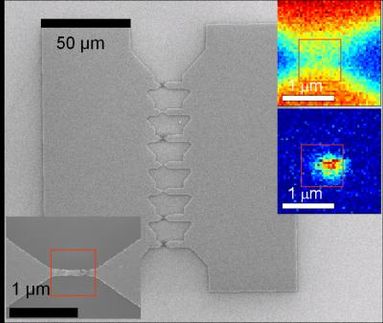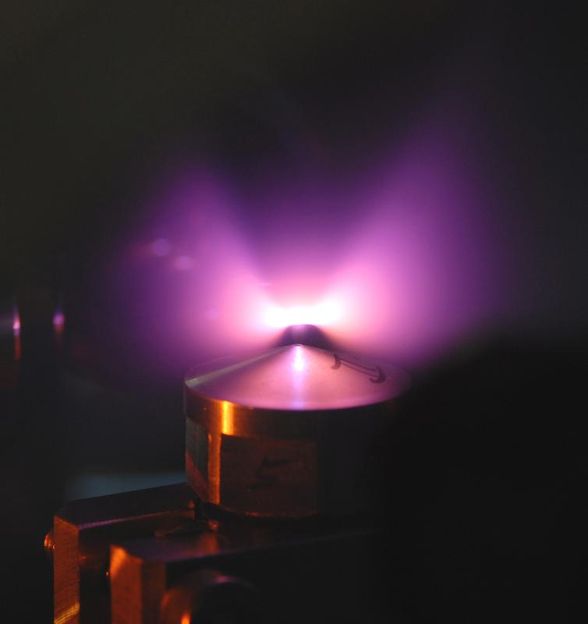'The photon force is with us': Harnessing light to drive nanomachines
Science fiction writers have long envisioned sailing a spacecraft by the optical force of the sun's light. But, the forces of sunlight are too weak to fill even the oversized sails that have been tried. Now a team led by researchers at the Yale School of Engineering & Applied Science has shown that the force of light indeed can be harnessed to drive machines — when the process is scaled to nano-proportions.
Their work opens the door to a new class of semiconductor devices that are operated by the force of light. They envision a future where this process powers quantum information processing and sensing devices, as well as telecommunications that run at ultra-high speed and consume little power. The research, appearing in Nature, demonstrates a marriage of two emerging fields of research — nanophotonics and nanomechanics. – which makes possible the extreme miniaturization of optics and mechanics on a silicon chip.
The energy of light has been harnessed and used in many ways. The "force" of light is different — it is a push or a pull action that causes something to move.
"While the force of light is far too weak for us to feel in everyday life, we have found that it can be harnessed and used at the nanoscale," said team leader Hong Tang, assistant professor at Yale. "Our work demonstrates the advantage of using nano-objects as "targets" for the force of light — using devices that are a billion-billion times smaller than a space sail, and that match the size of today's typical transistors."
Until now light has only been used to maneuver single tiny objects with a focused laser beam — a technique called "optical tweezers." Postdoctoral scientist and lead author, Mo Li noted, "Instead of moving particles with light, now we integrate everything on a chip and move a semiconductor device."
"When researchers talk about optical forces, they are generally referring to the radiation pressure light applies in the direction of the flow of light," said Tang. "The new force we have investigated actually kicks out to the side of that light flow."
While this new optical force was predicted by several theories, the proof required state-of-the-art nanophotonics to confine light with ultra-high intensity within nanoscale photonic wires. The researchers showed that when the concentrated light was guided through a nanoscale mechanical device, significant light force could be generated — enough, in fact, to operate nanoscale machinery on a silicon chip.
The light force was routed in much the same way electronic wires are laid out on today's large scale integrated circuits. Because light intensity is much higher when it is guided at the nanoscale, they were able to exploit the force. "We calculate that the illumination we harness is a million times stronger than direct sunlight," adds Wolfram Pernice, a Humboldt postdoctoral fellow with Tang.
"We create hundreds of devices on a single chip, and all of them work," says Tang, who attributes this success to a great optical I/O device design provided by their collaborators at the University of Washington.
Most read news

Get the analytics and lab tech industry in your inbox
By submitting this form you agree that LUMITOS AG will send you the newsletter(s) selected above by email. Your data will not be passed on to third parties. Your data will be stored and processed in accordance with our data protection regulations. LUMITOS may contact you by email for the purpose of advertising or market and opinion surveys. You can revoke your consent at any time without giving reasons to LUMITOS AG, Ernst-Augustin-Str. 2, 12489 Berlin, Germany or by e-mail at revoke@lumitos.com with effect for the future. In addition, each email contains a link to unsubscribe from the corresponding newsletter.


























































